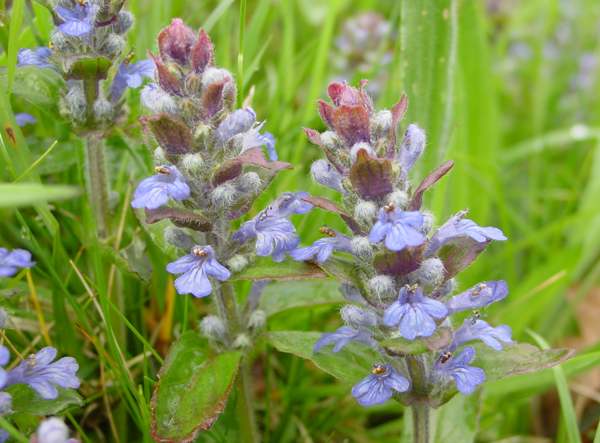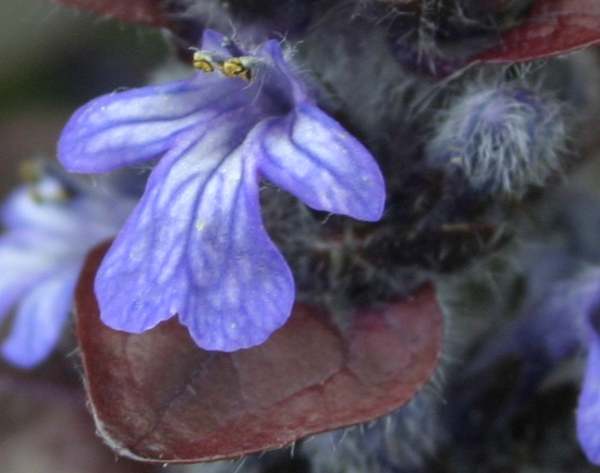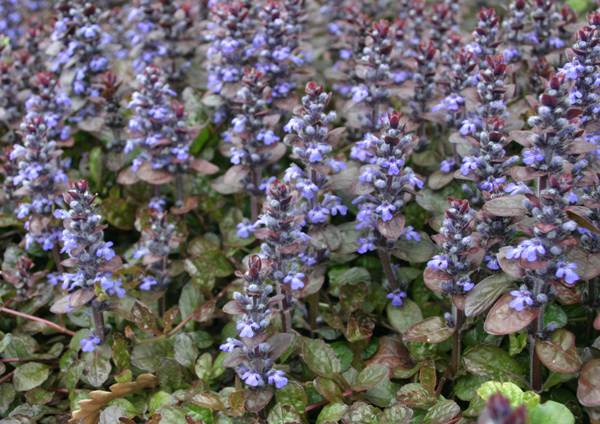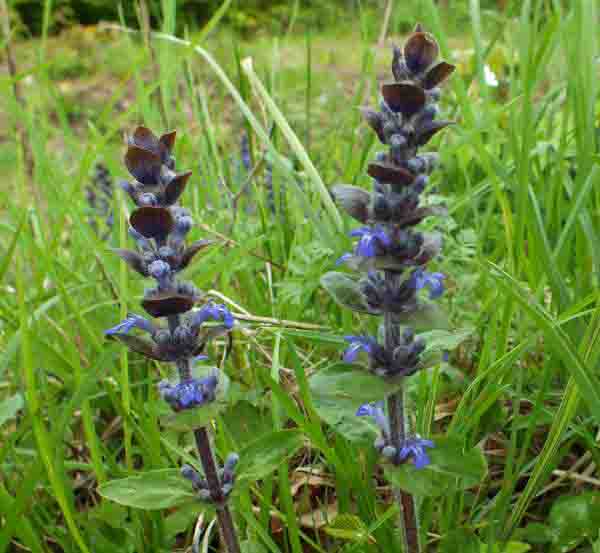Trees Birds Mammals Fish Amphibians Reptiles
Wild Algarve
Bookshop
Ajuga reptans - Bugle
Phylum: Magnoliophyta - Class: Equisetopsida - Order: Apiales - Family: Lamiaceae

A bronze tint to the upper leaves is a distinctive feature that helps separate Bugle from most other members of the Mint family.
Description
Stems have a square cross section, hairy on just two opposing sides; they bear pairs of opposite oval leaves that are unstalked apart from a basal rosette of leaves which have short stalks. The blue-violet flowers are typically 1.5cm long and have a pattern of veins on the lower lip.

Bugle can grow up to 20cm tall but is often little more than half that height. The plants propagate mainly by growing surface runners (which are known as stolons) that root at intervals along their length.
Distribution
Unlike its close relative Pyramidal Bugle Ajuga pyramidalis, this plant is common throughout Britain and Ireland and is found also across much of mainland Europe.

Habitat
Bugle prefers heavy, wet soils and forms large, dense mats in favoured locations. This attractive low creeping perennial wildflower thrives on woodland edges and in damp grassland.
Blooming Times
In Britain the first flowers usually appear in April, and Bugle continues blooming until late June or early July. The lips of the flowers are veined with darker blue.

Uses
Although Bugle has been used in herbal remedies to stem bleeding, it is more important as a source of nectar for butterflies including the Pearl-bordered Fritillary Boloria euphrosyne, the Small Pearl-bordered Fritillary Boloria selene, the Dark Green Fritillary Argynnis aglaja, and the High Brown Fritillary Fabriciana adippe.
(We strongly advise against eating or using as medicines any plants without first obtaining qualified professional advice.)
Etymology
Ajuga, the genus name, comes from Greek and means 'without a yoke'. The specific epithet reptans means creeping (like a reptile).
The plants shown here were photographed in South Wales and in France in early spring.
Sue Parker's latest ebook is a revised and enlarged edition of Wild Orchids in The Burren. Full details here...
Buy it for just £5.95 on Amazon...
Sue Parker's new ebook is a comprehensive and fully revised edition of her acclaimed field guide to the Wild Orchids of Wales. Full details here...
Buy it for just £5.95 on Amazon...
Please Help Us: If you have found this information interesting and useful, please consider helping to keep First Nature online by making a small donation towards the web hosting and internet costs.
Any donations over and above the essential running costs will help support the conservation work of Plantlife, the Rivers Trust and charitable botanic gardens - as do author royalties and publisher proceeds from books by Pat and Sue.